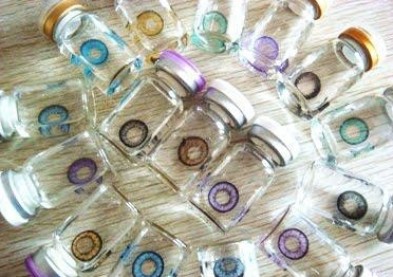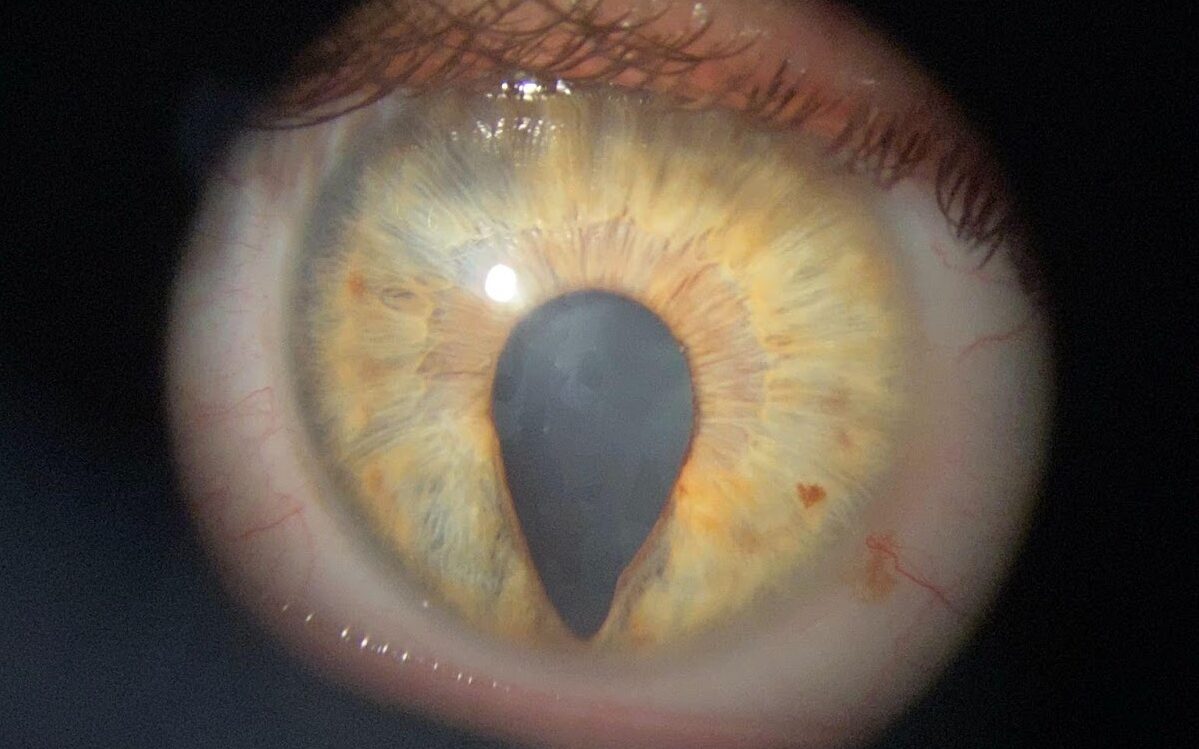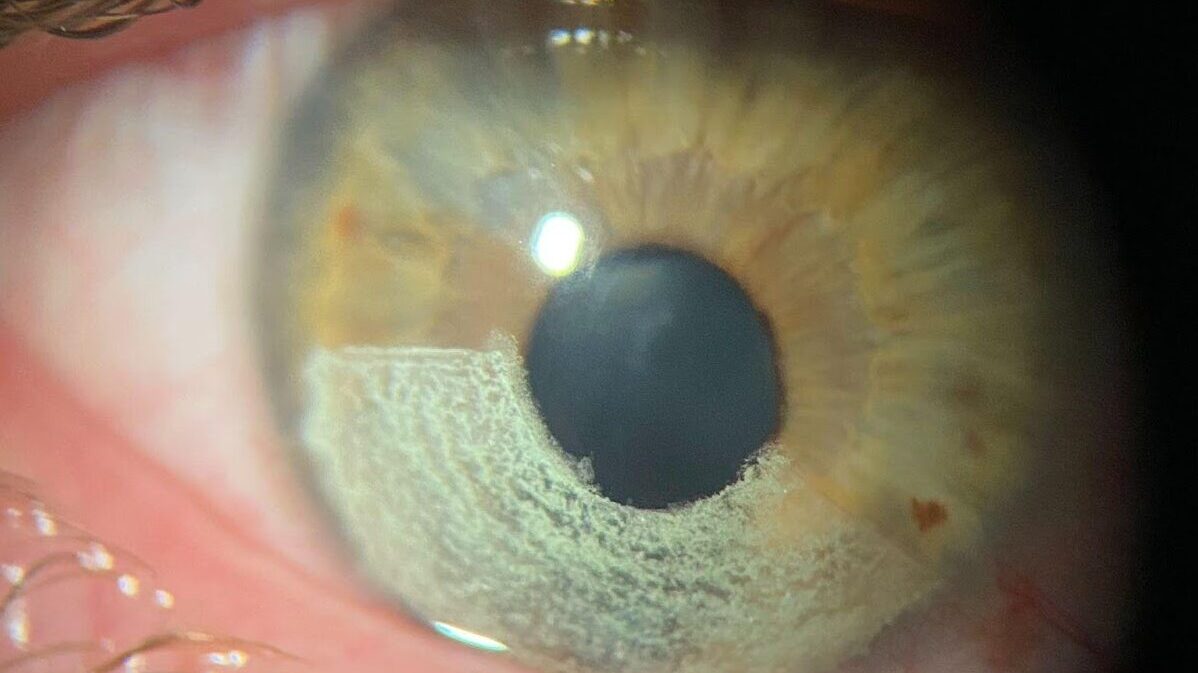Keratopigmentation
The FLAAK® technique
The FLAAK® (Femto Laser Aesthetic Annular Keratopigmentation) technique is a surgical technique for changing the color of the eyes for therapeutic and aesthetic purposes.
New Color proposes a process of pigmentation of the cornea (keratopigmentation from the Greek kerato, cornea and pigmentation) which makes it possible to modify the color of your eyes with a range of tints similar to the colors of the iris. The result is immediate and as natural as possible. The range of colors offered consists of blues, greens, browns and grays with intensities and shades according to your wishes.
Initially used for therapeutic purposes, keratopigmentation was developed in the 2000s for eye reconstruction and traumatic irises. The safety of the biocompatible pigment with the cornea, the quality of the results obtained and the satisfaction of the patients have led, since 2010, to extend the technique to aesthetic indications.
The principle of the FLAAK® technique consists in creating a micro-tunnel in the thickness of the cornea with the Femtosecond VisuMax laser (Zeiss). The pigment is then introduced in a few seconds.
The pigment used, BioChromaEyes®, is manufactured in France by BIOTIC Phocea Laboratories, the only manufacturer in the world to offer a pigment approved by the ANSM (Agence Nationale de Sécurité du Médicament et des Produits de Santé) and the European health safety authorities.
Unlike other techniques (laser depigmentation of the iris or introduction of a colored iris implant), the FLAAK® proposed by New Color only concerns the surface of the eye and thus avoids intraocular complications such as hemorrhages, infections, retinal detachment and glaucoma.
The FLAAK® procedure in New Color can be performed regardless of the initial eye color. The surgery lasts 30 to 45 minutes for both eyes, and is completely painless thanks to a topical anesthesia with simple drops of an anesthetic eye drop. The result is immediate.
FLAAK® : a reversible technique* !
Unlike other techniques such as laser depigmentation of the iris or the placement of an artificial iris in the eye, keratopigmentation using the FLAAK® technique is now reversible* and allows you to regain the original color of your eyes.
The reversal procedure called R-FLAAK® is a quick and painless surgical technique. The patient can usually resume his or her activities the day after the R-FLAAK® procedure.
Note: a reversibility procedure limits any further keratopigmentation procedure. Therefore, it is not possible to consider the R-FLAAK® procedure to change eye color again. The post-operative result allows you to regain the color of your eyes.
*Reversibility can in some cases leave a discrete peripheral ring of pigment barely perceptible and only at a very close distance.
FLAAK® : the choice of safety
Thanks to its superficial, micro-invasive and reversible* treatment, the FLAAK® technique is the only surgical procedure that allows you to change the color of your eyes with optimal safety!
The laser used (link to by laser) is the Femtosecond VisuMax (Zeiss), the only laser that allows the FLAAK® technique, 100% laser and automated keratopigmentation. In the same way, the BiochromaEyes pigment is the only pigment biocompatible with the cornea having received a marketing authorization as a medical device by the health authorities.
There are two other surgical techniques that are prohibited in France because of their potentially serious complications.
Laser depigmentation

It is possible to depigment a natural iris by laser photodispersion with no choice of color. The action of the laser on the iris generates debris that cannot be evacuated, obstructing the trabeculum. This causes hypertension of the eye compressing the optic nerve and inducing chronic glaucoma that can lead to blindness. Moreover, only one result is possible giving a washed out look with a grayish color.
What about cosmetic contact lenses?

Also be careful when wearing colored lenses. They have the advantage of simplicity, but they are most often used without any medical supervision. Their tolerance is imperfect and this is not without risk. Investigations into the causes of corneal infections and abscesses reveal that cosmetic lenses are by far the leading cause of these accidents.
Introduction of a colored iris implant

Covering the iris with a colored iris implant is indeed possible but is only for very severely traumatized eyes in which a total reconstruction of the anterior segment is necessary (cornea, lens, iris). Indeed, in a normal eye, there is not enough space to introduce the artificial iris. In a significant number of cases, the implantation of colored irises has caused irreparable damage resulting in severe pathologies such as glaucoma leading to legal blindness (visual acuity less than 1/20). Chronic uveitis due to friction between the iris and the implant is also a complication. Adhesions between the implant and the iris (synechiae) cause irreversible tears in the iris during explantation. Inflammation caused by the placement of the artificial iris can also lead to an increase in intraocular pressure. A decompensation of the cornea is also often observed after this type of surgery. A corneal transplant is then necessary.
Because of the many risks associated with this procedure, it has not been approved by the European Union and is prohibited in many countries.
A series of French patients operated on in Tunisia and Latin America was analyzed in different French centers and published in 2020: out of 87 cases, 80% of serious complications were noted, leading to the explantation of colored iris implants. Some patients in this series unfortunately lost their vision.
FLAAK® and refractive surgery
Changing the color of your eyes and surgically correcting your vision is entirely possible.
The diversity of surgical techniques in refractive surgery makes it possible to consider vision correction (laser or implants) after having benefited from a keratopigmentation by FLAAK® technique.
For patients who have had previous refractive surgery:
Keratopigmentation surgery is usually possible after surface refractive surgery (PRK) or intraocular implants. If the patient has undergone a LASIK or SMILE technique, specific examinations to determine the feasibility of the procedure.
For patients seeking refractive surgery:
Depending on the visual defect, the surgeon selects the most appropriate surgical technique (laser or implants). The correction of the vision, whatever the technique, will be performed within a minimum of 3 months after the keratopigmentation.
What visual defects can be corrected after keratopigmentation?
What surgical techniques are used to correct vision after keratopigmentation?
- PKR
- LASIK / PresbyLASIK
- ICL Implant
- Prelex Implant
FLAAK® Therapeutic
Originally, keratopigmentation was developed for therapeutic indications in the context of reconstruction of pathological iris or corneal anomalies. These anomalies are the consequence of physical trauma, surgical trauma, congenital malformations, infectious consequences, damage caused by colored iris implants, etc.
Keratopigmentation for therapeutic purposes is intended for patients suffering from :
- Scarred or bleached cornea following a transplant, a trauma, an infection, etc.
- Irial coloboma with abnormally shaped pupil
- Partial or total aniridia (absence of iris)
- Albinism to reduce sensitivity to light (photophobia)
- Traumatic iris
- Permanent mydriasis (pupil remains dilated)
- Photophobia
For these different cases, it is possible to benefit from the FLAAK® technique in order to improve the functionality of the eye and regain the aesthetic integrity of the eyes.




A little history…
Wanting to change the color of your eyes by keratopigmentation is not new!
It is the physicist and philosopher Galen of Pergamum who will practice the first tattooing of the cornea. He is considered the first physician to have pigmented a human cornea in the 170s AD.

At that time, corneal tattooing was intended to give an aesthetic aspect to eyes with opaque corneas. The surface of the cornea was cauterized before a colored powder made of iron and walnut or a mixture of pomegranate bark and copper salts was applied.
It is only much later, in the 1870’s, that we find in the literature the term “corneal tattooing” used by oculoplastic surgeons such as Louis Von Wecker. Its technique is similar to that of the classic tattoo: after having deposited a fine film of ink on the cornea, a needle allows the pigment to penetrate the cornea. In the early 1900’s, keratopigmentation gained popularity with the appearance of colored inks and new instruments, still based on the technique of Louis Von Wecker.
In 1922, with his book “Multicolor tattooing of cornea”, the American ophthalmologist Samuel Lewis Ziegler brought keratopigmentation into the modern world. Throughout his career, he will detail the operating protocol, the instruments and the pigments necessary for this surgery.
In the 1990s, advances in precision machining made it possible to create tools that allowed the creation of a tunnel in the cornea to house ring segments for the first intention treatment of keratoconus. The realization of a more or less regular tunnel makes it possible to introduce a pigment directly into the cornea without having to resort to several hundred injections.
The advent of the Femtosecond laser in the 2000s was a real revolution in the automated creation of intracorneal tunnels. The high precision of this type of laser makes it possible to obtain perfectly regular tunnels at the desired depth. At the same time, the development of better quality pigments that are biocompatible with corneal tissue (BiochromaEyes) allowed for a more natural and aesthetic result. The excellent results obtained thanks to these significant advances in therapeutic keratopigmentation have made it possible, since 2010, to offer this technique for aesthetic purposes on healthy corneas for patients who wish to change the color of their eyes.
Today, only the Femtosecond VisuMax laser from the Zeiss laboratory allows for 100% laser keratopigmentation.

